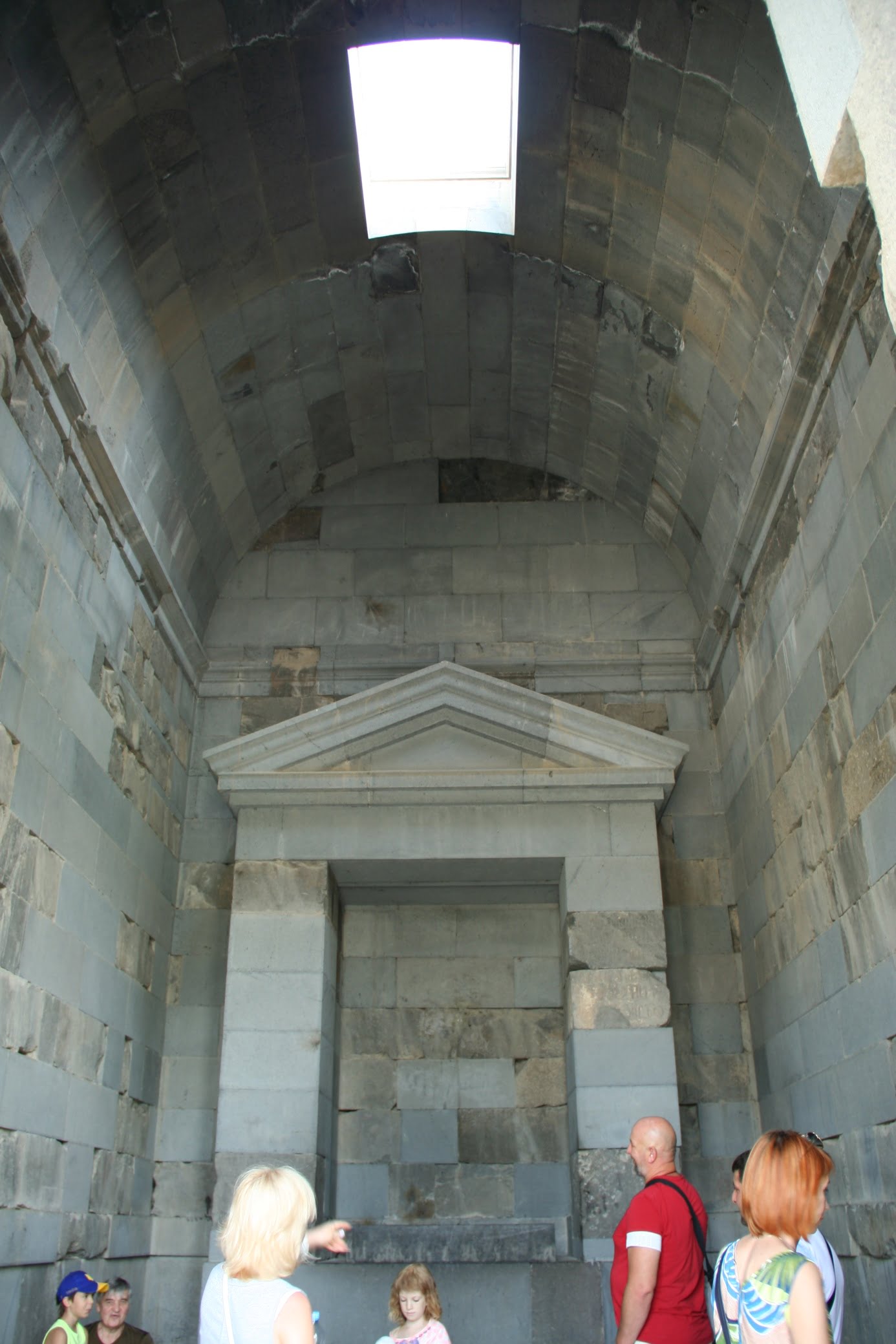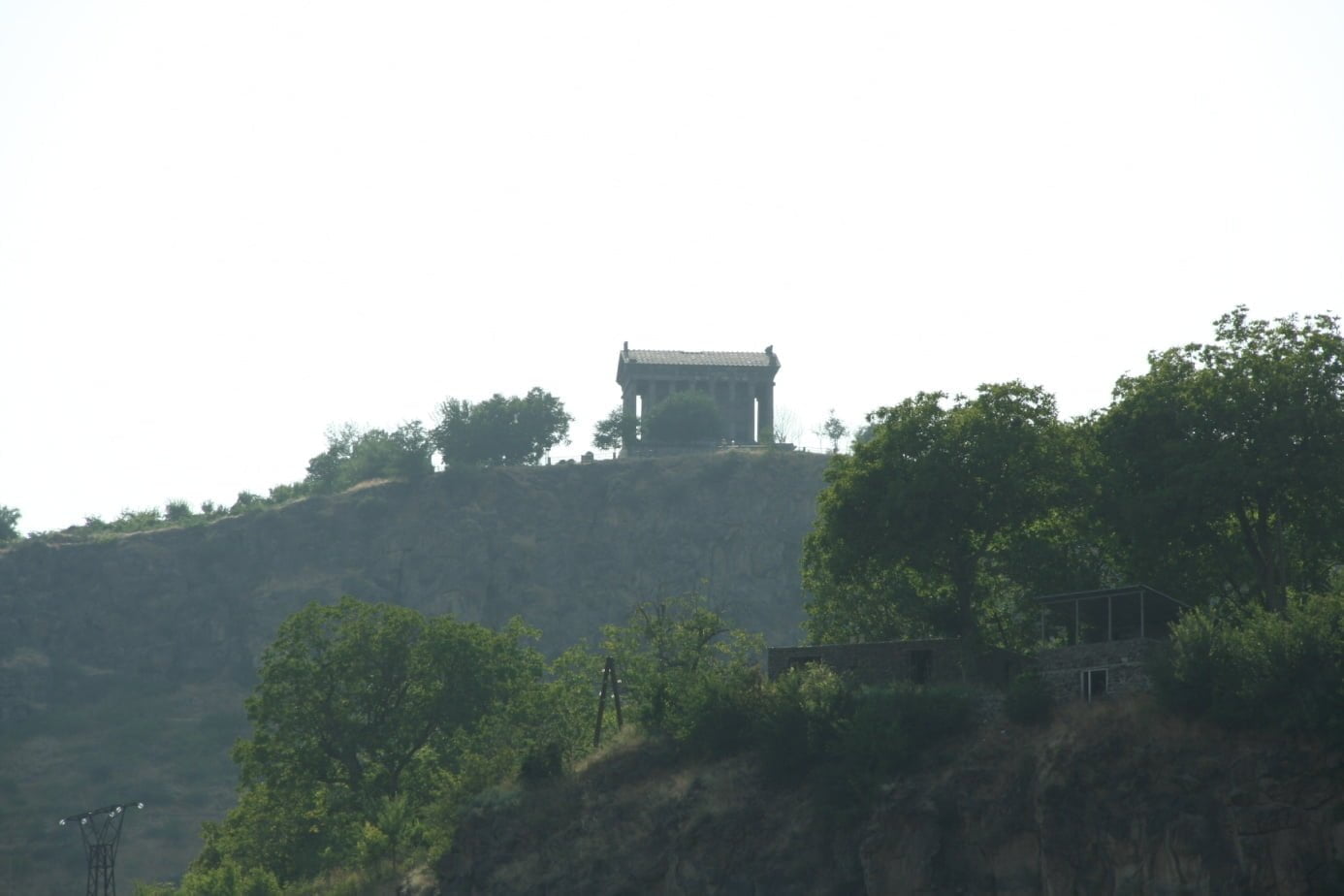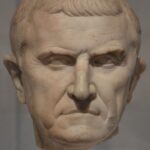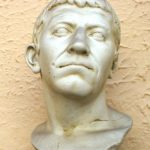A restored Roman temple with an Ionic-style colonnade can be admired in Garni, east of Yerevan, the capital of Armenia. It is the only building of this type in Armenia and the entire former Soviet Union and the highest of all known Roman temples (1396 m above sea level).
The construction of the temple is credited to King Tiridates I, who was to commission it to be built after his coronation. In 66 CE He returned from Rome, where he was crowned Armenia by Nero. According to the inscriptions found at the excavation site, the temple was completed in the 11th year of his reign, i.e. in 77 CE. Tacitus mentions it in his “Annals” from the 1st century CE. It was probably dedicated to Mihr, a deity from the Armenian pantheon, whose mythology was heavily influenced by Zoroastrianism. He was the equivalent of Mithras and as he was often depicted fighting a bull – marble remains of carved bull’s hooves were found not far from the temple, which some scientists believe make this theory.
Even so, there are alternative building concepts. According to one of them, it was the tomb of the king of Armenia, Sohaemus, built-in 175, which allowed the building to survive the conversion of Armenia to Christianity. In the 4th century, Tiridates III adopted Christianity as the state religion and reallocated the building to a summer palace for his sister, Khosrowiducht. The temple collapsed during the earthquake on June 4, 1679. Despite the appearance of the first reconstruction plans in the nineteenth century, the reconstruction began only in 1969. This was possible thanks to the preservation of over 80% of the original materials that were used in the reconstruction process using the anastylosis technique. The reconstruction was completed in 1975.
The temple is a periphery, surrounded by a single colonnade. Constructed of basalt blocks, it has 24 columns, 6.54 m high – 8 on each side and 6 when viewed from the front and rear. The temple is entered via 9 steep stairs (30 cm high). The two landings on the sides of the stairs are decorated with the image of Atlas and were probably the bases for the sacrificial altars. The pediment shows geometric and floral motifs. Above the acanthus leaf frieze are carved lion heads (part of the original architrave is in the British Museum). Naos measures 7,132 m (height) by 7.98 m (length) by 5.05 m (width). In addition to the spacious entrance, it is also illuminated by an opening in the roof. Next to the temple, there are ruins of a palace and a bathhouse.
Today, the temple is one of the most visited tourist attractions in Armenia. It is also used by Armenian pagans in celebrating the New Year and other holidays. Concerts are also held there from time to time. The temple appeared on one of the Armenian banknotes, and in Poland, it can be associated with scenes from The Journey of Mr Kleks.
- The vicinity of the temple in Garni
- The interior of the temple in Garni
- The temple in Garni seen from the Azat River valley at the tributary of the Goght River










